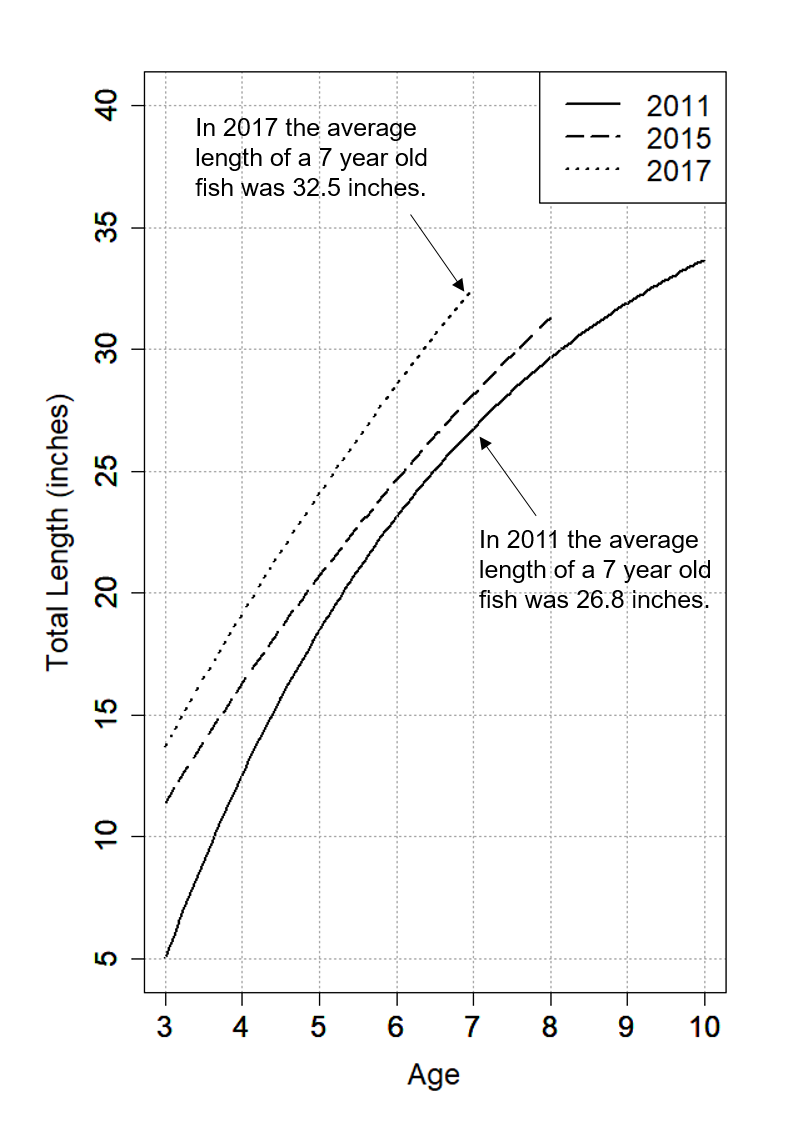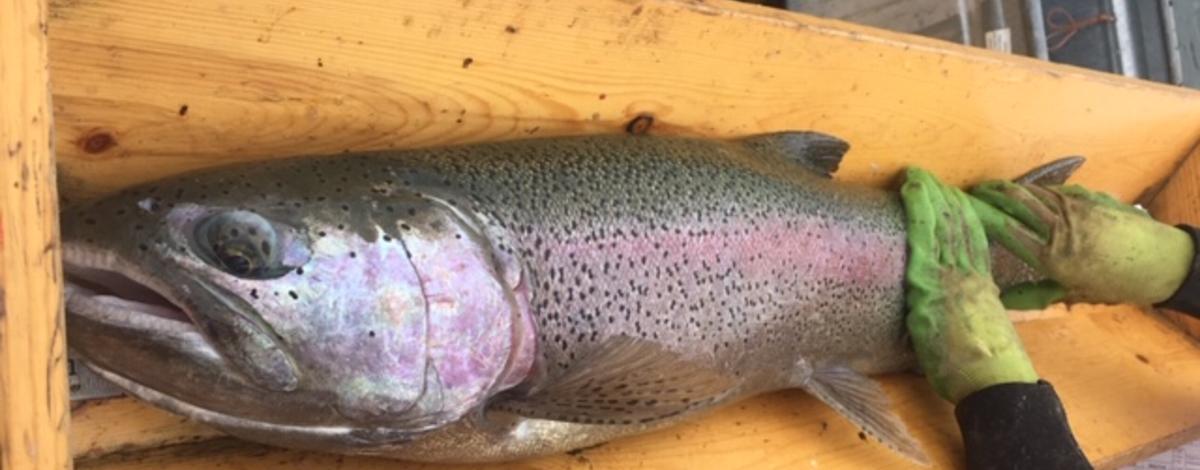The rainbow trout population in Lake Pend Oreille supports a world-class trophy fishery. One of the goals of Idaho Fish and Game is to recover the Lake Pend Oreille fishery to improve the abundance of kokanee, which in turn provides food for trophy rainbow trout.
One way we evaluate the success of the fishery’s recovery is to determine if rainbow trout growth has improved. However, the nature of these fish can make them challenging to monitor. Rainbow trout in Lake Pend Oreille are difficult to catch using standard fish sampling techniques because they are dispersed in deep, open water.
One strategy IDFG uses to understand the fishery is to ask volunteer anglers to collect information and samples from the rainbow trout they catch. Anglers interested in volunteering can obtain logbooks and sampling materials from the department.
This program is only a few years old, but we’ve already learned some important things. Information obtained from rainbow trout fin rays since 2011 show a positive growth trend that coincides with increased kokanee abundance. In 2017, the average predicted length of an age-7 rainbow trout in Lake Pend Oreille was 32.5 inches versus 26.8 inches in 2011. The average length at a given age for rainbow trout in Lake Pend Oreille has increased consistently over time (see below). This indicates that rainbow trout are growing larger faster, which means trophy potential in this already outstanding fishery is getting even better!
Much of this data was derived from data provided by volunteer anglers. Participating anglers record information in the logbooks, such as the number of hours fished and catch per day throughout the season. The logbooks are then collected once a year during the first two weeks of January. During this timeframe, anglers can return their logbooks to the IDFG regional office in Coeur d’Alene or to the IDFG Lake Pend Oreille Research Station in Bayview. IDFG can use the information from these logbooks to estimate angler catch rates and evaluate size distribution of fish caught.
In 2016 and 2017, logbook information showed the average angler spent a little over two hours fishing to catch a rainbow trout on Lake Pend Oreille. Over 17 percent of rainbow trout caught were larger than 25 inches in both years. In total, anglers participating in the program caught 230 rainbow trout during 63 fishing trips in 2016, and 375 rainbow trout during 115 fishing trips in 2017.
The samples anglers collect are pectoral fin rays, which are used to assess the growth rates of rainbow trout in Lake Pend Oreille. Within a year, fish can experience periods of rapid growth and slow growth. These alternating periods of fast and slow growth cause the formation of annual marks on the fin rays. These marks can be counted to determine the age of a fish.
The average length of the fish in each age group can then be used to evaluate growth rates. IDFG asks anglers to collect pectoral fin rays from rainbow trout because this sampling method is non-lethal. Anglers participating in this program should take these samples in the fall. Please do not collect fin rays from rainbow trout and provide them to us unless you have signed up for this program and received instructions and collection envelopes from us.
The information and samples obtained from anglers are essential for monitoring the rainbow trout population in Lake Pend Oreille. Anglers who are interested in volunteering to help can contact Nicky Graham (nicole.graham@idfg.idaho.gov) or Matt Corsi (matthew.corsi@idfg.idaho.gov) to receive an angler logbook and instructions for collecting fin rays.

Figure 1. Average length at age in 2011, 2015 and 2017 for rainbow trout in Lake Pend Oreille.

